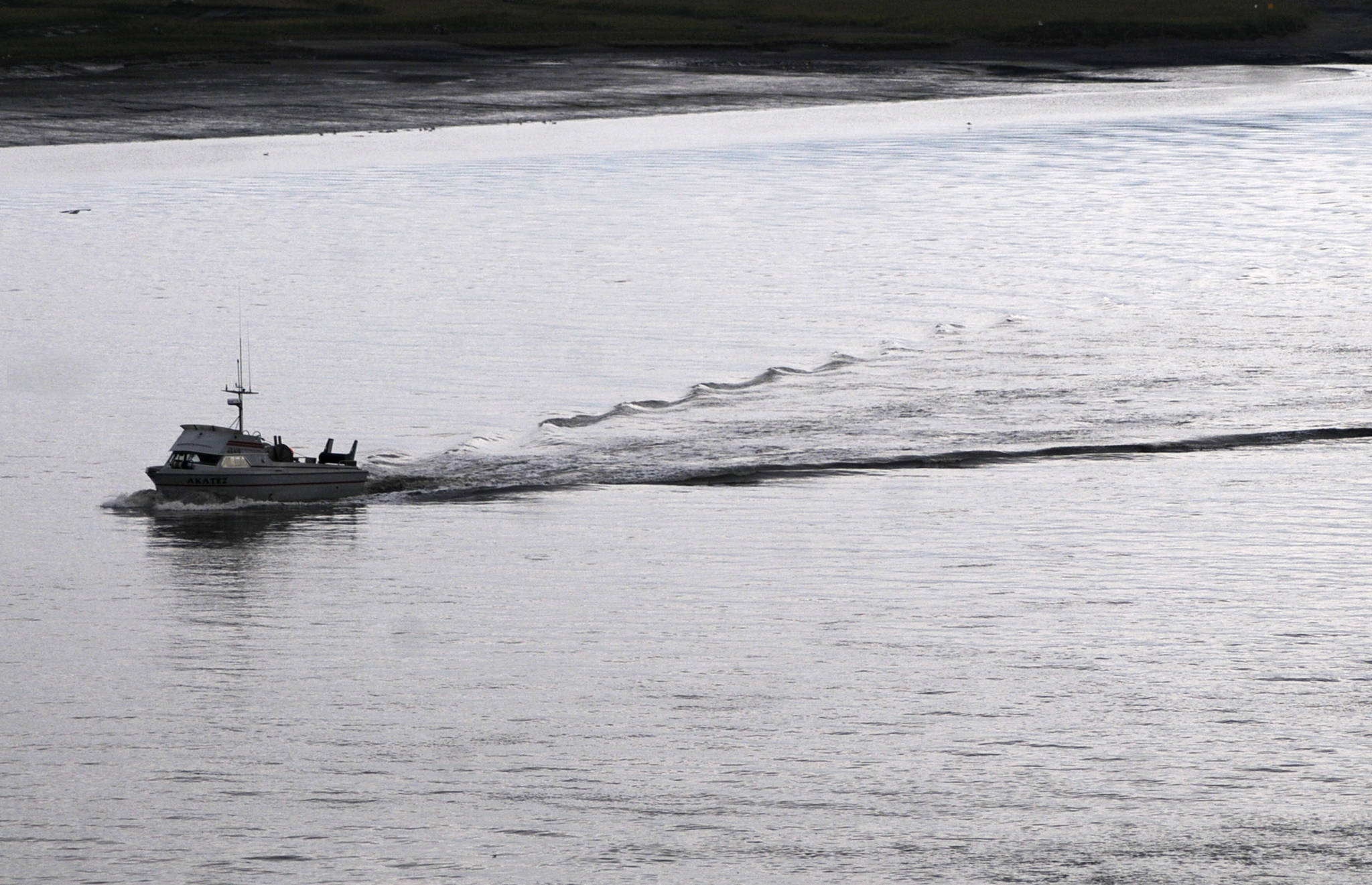Upper Cook Inlet’s commercial drift gillnet commercial fishermen got to fish throughout the waters of the central district during their regular period Monday.
It’s the first time in several years that fishermen have been able to fish inlet-wide rather than in designated areas of Cook Inlet. Fishing inlet-wide was something the fishermen pushed hard for at the 2017 Upper Cook Inlet Board of Fisheries meeting, saying it allows them to fish more efficiently for the sockeye returning to the various stream systems in the area. The Board of Fisheries granted the request with parameters — it could only happen for one of the 12-hour periods in July, and only if the Kenai River run was projected to be more than 2.3 million sockeye.
On Friday, the Alaska Department of Fish and Game revised its inseason projection for sockeye, saying the run was two or more days late, and could come in at more than 2.3 million. It allowed managers to let drift gillnetters to fish inlet-wide for their regular Monday period.
Upper Cook Inlet’s other commercial fishermen were also out Monday, with the east side setnet fishermen fishing their regular 12-hour period between 7 a.m. and 7 p.m. The fishermen were all out Saturday as well, fishing between 9 a.m. and 11 p.m.
The harvest wasn’t exceptionally large, though. Fish and Game data shows that the east side setnetters and drift gillnetters harvested a total of 140,153 salmon, about 101,000 of which were sockeye, during their Saturday period. By comparison, the central district fishermen harvested more than 278,000 salmon on July 13, their largest harvest day of the season so far.
Overall, all of Upper Cook Inlet’s commercial fishermen — including the Northern District and the fishermen on Kalgin Island and on Cook Inlet’s west side — have harvested about 1.8 million salmon, about 1.47 million of which are sockeye.
Fishing closes Aug. 15 for the entire central district, though if the drift gillnet fishermen catch less than 1 percent of the total season’s catch on any two consecutive periods after Aug. 1, the main part of the fishery closes. For east side setnetters, that date is Aug. 7.
Commercial fishermen won’t fish Tuesday, said assistant commercial fisheries area management biologist Alyssa Frothingham.
The Kenai River personal-use dipnet fishery, which primarily targets sockeye, ended Monday night at 11 p.m. The Kasilof River dipnet fishery continues until Aug. 5.
Sockeye salmon passage into the Kenai dropped off after a high last Wednesday, with 25,107 sockeye passing Fish and Game’s sonar on Sunday. A total of 717,073 sockeye have passed the sonar as of Sunday, according to Fish and Game’s data.
The Kasilof is significantly ahead of its count on the same date in 2016, with a total of 265,688 sockeye passing the sonar as of Sunday. Daily passage peaked last Friday and has dropped off as well, with 3,985 sockeye passing the sonar on Sunday.
Reach Elizabeth Earl at elizabeth.earl@peninsulaclarion.com.

